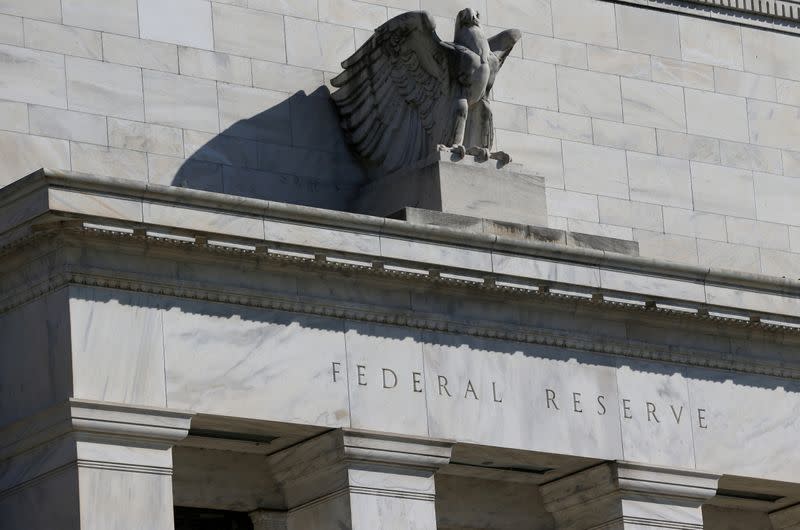Fed's 'bazooka' soothes dollar funding squeeze

By Tommy Wilkes, Kate Duguid and Gertrude Chavez-Dreyfuss
LONDON/NEW YORK (Reuters) - The U.S. Federal Reserve's efforts to shield the economy from coronavirus effects have, for now, slowed a scramble for dollars that threatened to clog funding markets, bringing back some calm on Tuesday.
The dollar had gained almost 9% in 11 days in the rush for cash, but fell on Tuesday, at one point to its weakest since March 19 <=USD>. Measures of dollar demand signalled that many businesses and banks felt they had enough for now.
The Fed announced on Monday it would buy bonds in unlimited numbers and backstop direct loans to companies, the latest in a series of policy steps taken over the past 10 days to calm markets and support the economy.
It actions have included 150 basis points of interest rate cuts, targeted schemes for short-term money markets and extended dollar swap lines. Those actions marked intervention by the central bank beyond financial markets, where it has so far concentrated its firepower, into the real economy.
Kit Juckes, a strategist at Societe Generale, said that taken together, the Fed announcements were "incredible."
Demand for dollars appears to be "largely sated in the sterling and euro markets, though not yet in yen," he said.
The three-month euro-dollar swap spread <EURCBS3M=ICAP>, a measure of the premium European borrowers are willing to pay for access to dollars, fell to 8 basis points from 14.5 bps on Monday, before the Fed's announcement.
The spread had risen as high as 86 bps last week, but measures including unprecedented joint action to ensure a plentiful supply of dollars for central banks has eased the rush for the U.S. currency.
Swap spreads in other currencies, such as sterling <GBPCBS3M=ICAP>, tightened, although the dollar-yen spread <JPYCBS3M=ICAP> remained relatively wide, with Japanese investors still prepared to pay a sizeable premium for access to dollars.
W. Brad Bechtel, global head of forex at Jefferies in New York, said the financial system still has segments with high dollar demand but not enough supply.
"The Fed has done a ton and there is almost an unlimited amount of U.S. dollars available so hopefully this is just a plumbing thing, and we are going to see that basis narrow once we get through quarter end," Bechtel said.
One major indicator of stress in the U.S. banking system, the FRA-OIS spread <USDF-O0X12=R>, which measures the risks banks attach to lending to each other, has compressed to about 40 basis points, below last week's levels of more than 50 basis points.
Investment grade credit also benefited from the Fed's intervention on Monday, with large exchange-traded funds tracking that market's rebound <LQD.P>. The spread of U.S. investment grade credit over safer Treasuries rose on Monday to its highest since May 2009, according to the ICE/BoFA index for that market <.MERC0A0>.
The average yield on the index, however, fell modestly from a decade-high hit on Friday, and Monday's increase in spreads was primarily due to a fall in Treasury yields.
The dollar, measured against a basket of currencies, fell 0.5% <=USD>. The euro <EUR=EBS> gained 0.8% to $1.0812, up from three-year lows of $1.0636 at the start of the week.
Emerging market currencies that have hit record lows versus the dollar also rebounded.
(Reporting by Tommy Reggiori Wilkes; Additional reporting by Kate Duguid and Gertrude Chavez-Dreyfuss in New York; Editing by Richard Chang)

 Yahoo Finance
Yahoo Finance 